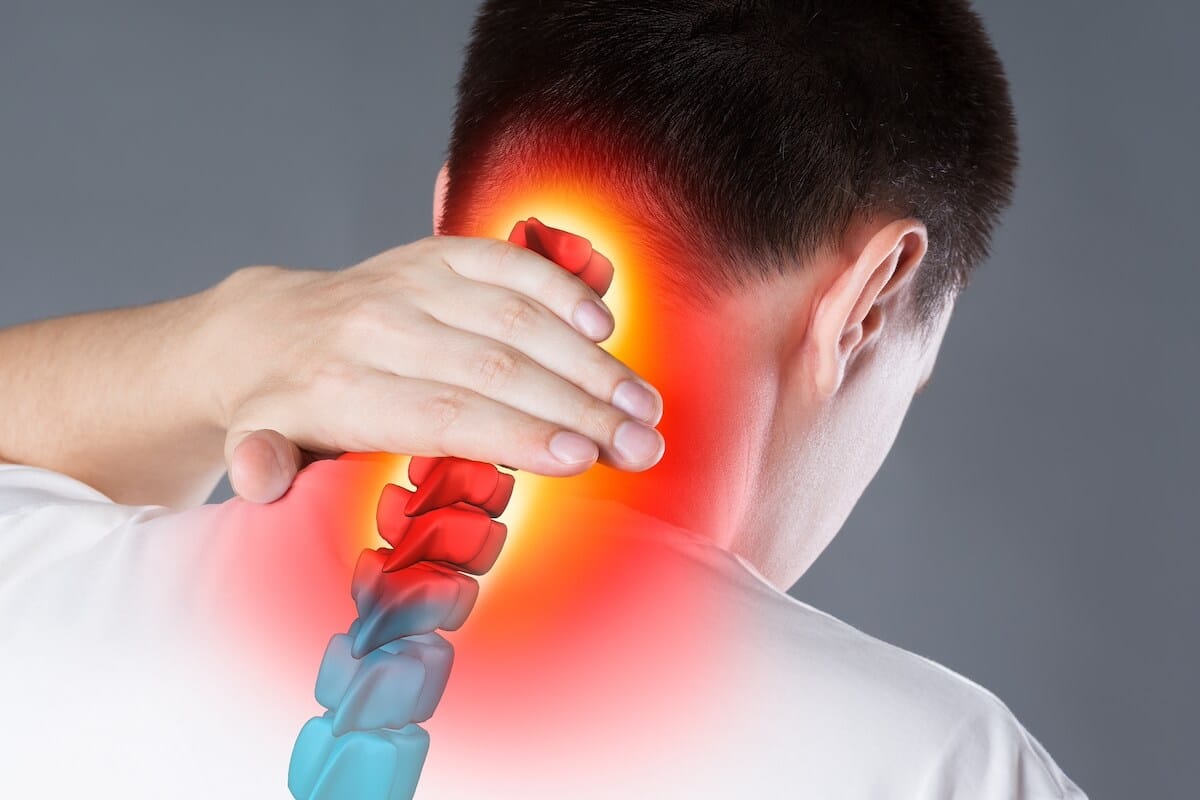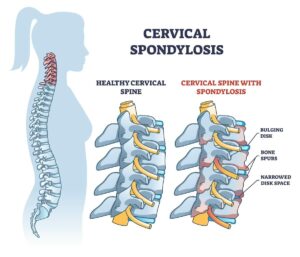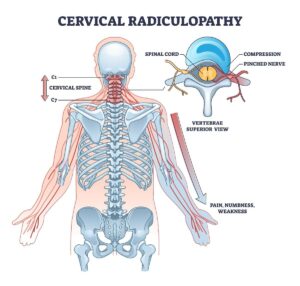Free download: Top 10 Natural & Easy Remedies for Joint Pain from Home. Learn these helpful remedies.
Estimated Reading Time: 7 minutes read
Neck pain is a common and often debilitating symptom for individuals with Rheumatoid Arthritis (RA), a chronic inflammatory disorder. While RA typically affects the joints in the hands and feet, it can also impact the cervical spine, leading to discomfort and restricted movement. This guide is dedicated to providing relief through a series of targeted exercises and care tips, helping individuals manage their symptoms and enhance their quality of life.
Dealing with neck pain in RA involves a holistic approach. Exercises focusing on soft tissue mobilization, range of motion, stretching, and strengthening can substantially alleviate stiffness, improve mobility, and decrease pain. These exercises, when performed consistently and correctly, can make a significant difference in daily comfort and overall health.
Table of Contents
Understanding the Causes of Rheumatoid Arthritis in the Neck
Rheumatoid Arthritis in the neck, also known as cervical RA, can be attributed to several factors:
- Autoimmune Reaction: RA is primarily an autoimmune disease where the body’s immune system mistakenly attacks its own tissues, including those in the cervical spine.
- Genetic Predisposition: Certain genes can increase susceptibility to developing RA, including those affecting the cervical region.
- Environmental Factors: Exposure to certain environmental factors, such as smoking or air pollutants, might contribute to the onset of RA.
- Hormonal Changes: Hormonal imbalances or changes might play a role in triggering RA.
- Infection: Some researchers believe that certain infections can trigger RA in genetically susceptible individuals.
Understanding these underlying causes can help in the effective management and treatment of RA in the neck.
Recognizing Symptoms of Rheumatoid Arthritis in the Neck
Identifying the symptoms of RA in the neck is crucial for timely and effective intervention:
- Pain and Tenderness: Persistent pain or tenderness in the neck area.
- Stiffness: Especially pronounced in the morning or after periods of inactivity.
- Decreased Range of Motion: Difficulty in turning the head or bending the neck.
- Nerve Compression: Symptoms such as tingling, numbness, or weakness due to spinal cord or nerve compression.
- Fatigue: General tiredness, which can be exacerbated by neck pain.
- Inflammation and Swelling: Visible signs of inflammation around the neck joints.
Prompt recognition of these symptoms can facilitate early treatment, improving the prognosis.
Soft Tissue Mobilization for Neck Pain Relief
Soft tissue mobilization can be a gentle and effective technique for relieving neck pain caused by Rheumatoid Arthritis.
Using a Lacrosse Ball: Rolling the ball gently against the neck and upper back areas helps release muscle tension. Regular use can improve flexibility and reduce the likelihood of spasms.
Enhancing Neck Mobility: Range of Motion Exercises
Range of motion exercises are essential for maintaining and improving neck mobility, reducing stiffness, and enhancing the quality of life.
1. Forward Bending
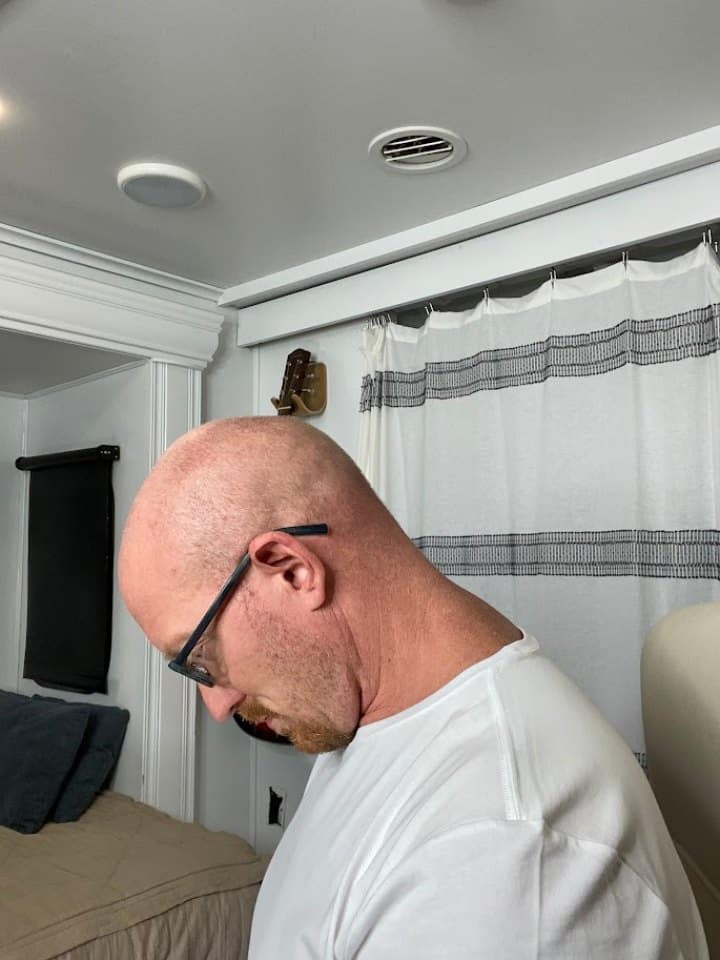
- Bend the head forward until you feel a comfortable stretch on the back of the neck.
- Hold for 2 seconds, then return to your starting position.
- Repeat 5-10 repetitions for 2 sets.
2. Rotation


- Turn the head one side at a time, practicing on both the left and right sides.
- Make sure you don’t force the motion.
- Key in on turning away from the side the cervical dystonia is naturally pulling you into.
- Hold for 2 seconds, then return to your starting position.
- Repeat 5-10 repetitions for 2 sets.
Effective Stretches for Neck Flexibility
Regular stretching can significantly improve neck flexibility and decrease stiffness associated with RA.
1. Levator Scapulae Stretch
- Begin by sitting upright in a chair.
- Depending on the side of pain, place that hand on the seat. For instance, if your right side aches, use the right hand.
- With your opposite hand, gently grasp the side of your head.
- Apply a gentle pressure to guide your gaze toward the opposite armpit.
- Hold for 30 seconds and repeat three times.

2. Pec Stretch

- Standing in front of your doorway, raise your arms up to shoulder height like a goalpost. The elbows will be bent with the palms facing forward.
- Keeping this position, rest the arms against your doorway.
- Slowly lean forward into a gentle stretch and hold for at least 30 seconds.
- Repeat this stretch for a total of 3 times.
Strengthening Exercises for Neck Support
Strengthening the muscles around the neck can provide better support to the cervical spine, reducing the burden on the joints.
1. Chin Tucks
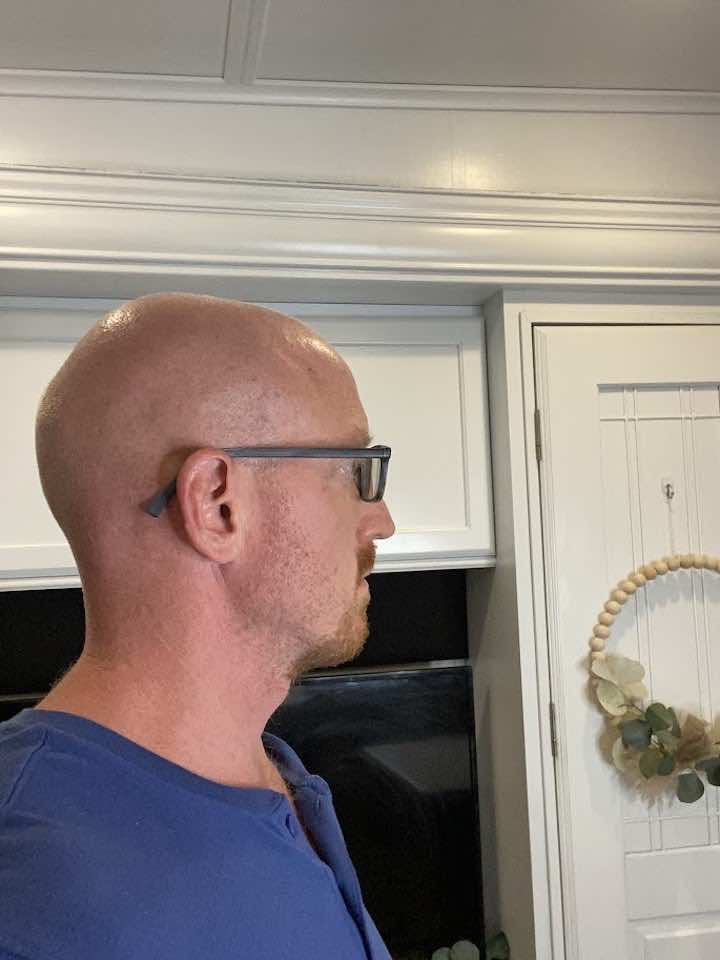

- You can perform a chin tuck laying on your back or sitting or standing.
- Gently tuck the chin directly back as if trying to make a double chin. Avoid nodding your head.
- Hold this position for 2 seconds, then slowly relax your muscles.
- Repeat 10 repetitions.
2. Scapular Retraction
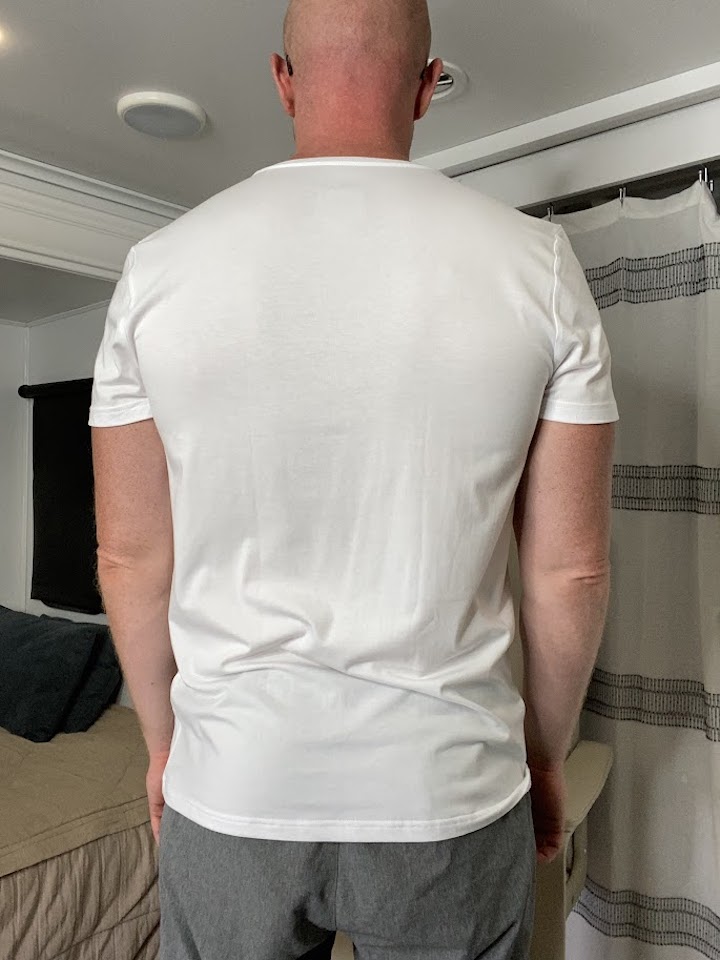
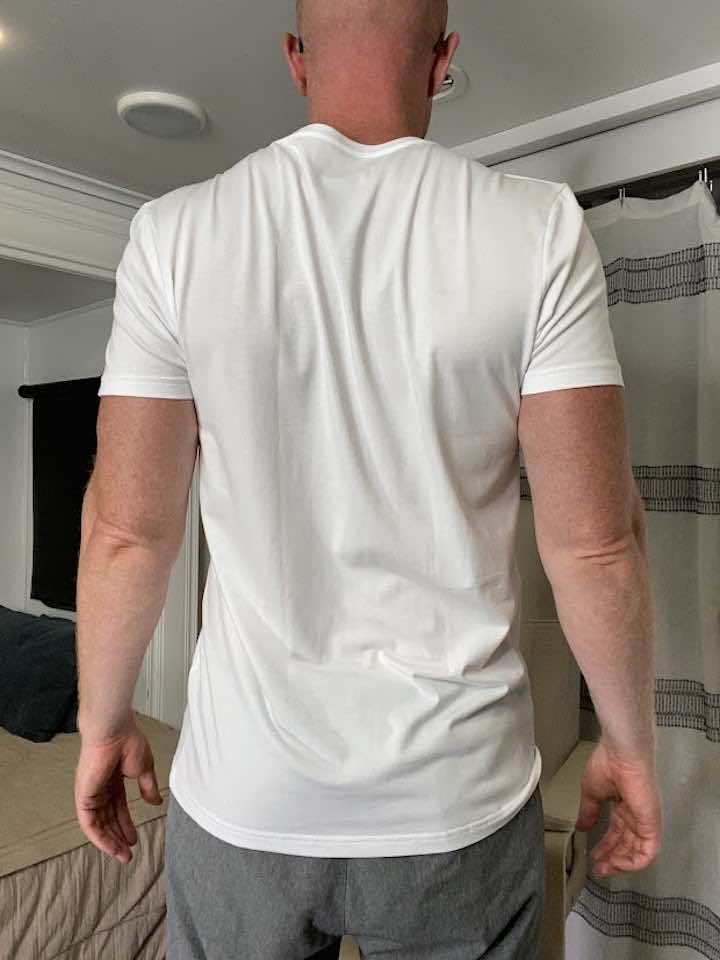
- In a sitting or standing position, try to sit as straight as possible. Aim to position the head in a neutral position as possible.
- Gently pull the shoulders back and squeeze the shoulder blades together.
- Hold for 5 seconds, then relax.
- Repeat 10 repetitions for 3 sets.
3. Rows with Resistance Band
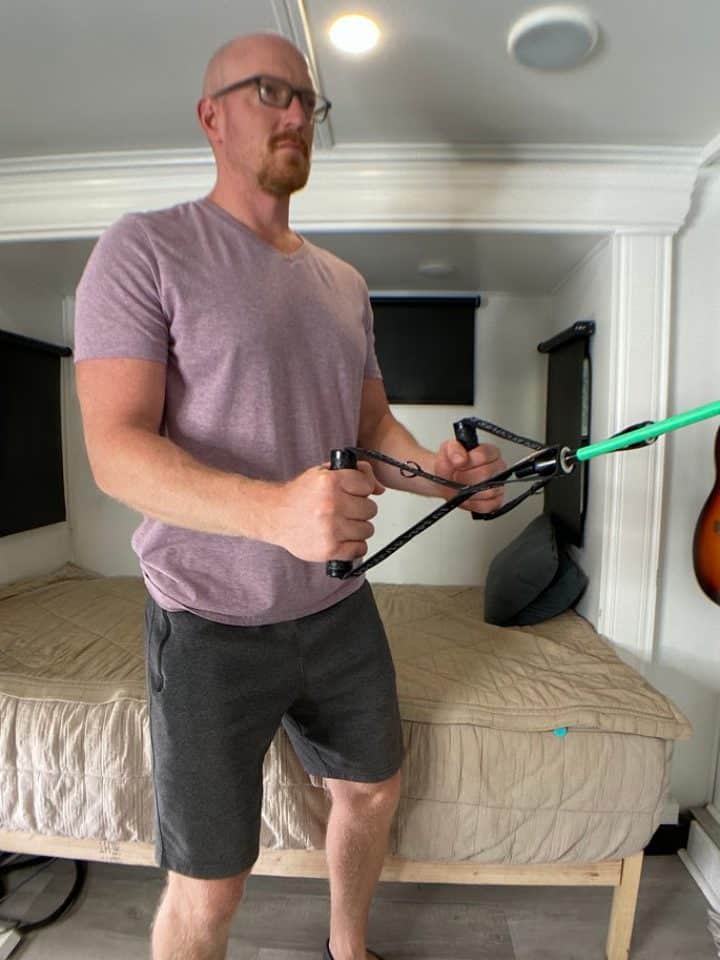
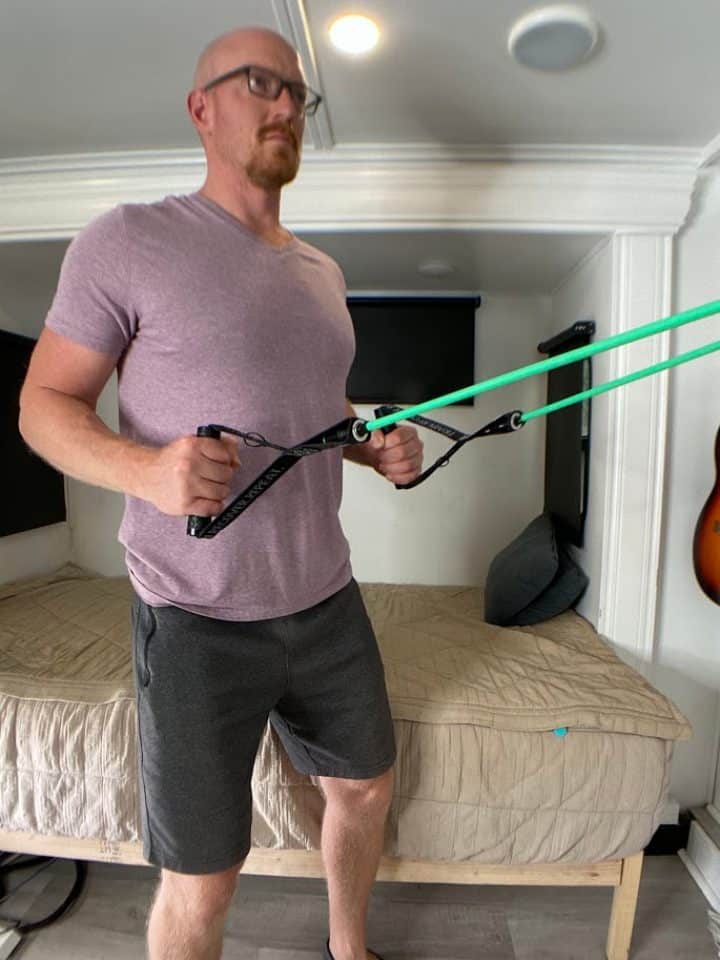
- Hold on to the ends of a resistance band (light, medium or heavy), which you can attach to a door knob.
- Begin with the arms elevated in front of you to shoulder height and the palms facing each other.
- Step back far enough that the resistance bend has a little tension.
- Pull back on the band by bending the elbows and swinging the arms back next to you. Make sure to squeeze the shoulder blades together.
- Hold for 2 seconds, then return to your starting position.
- Repeat 10 repetitions for 3 sets.
4. External Shoulder Rotation with a Resistance Band

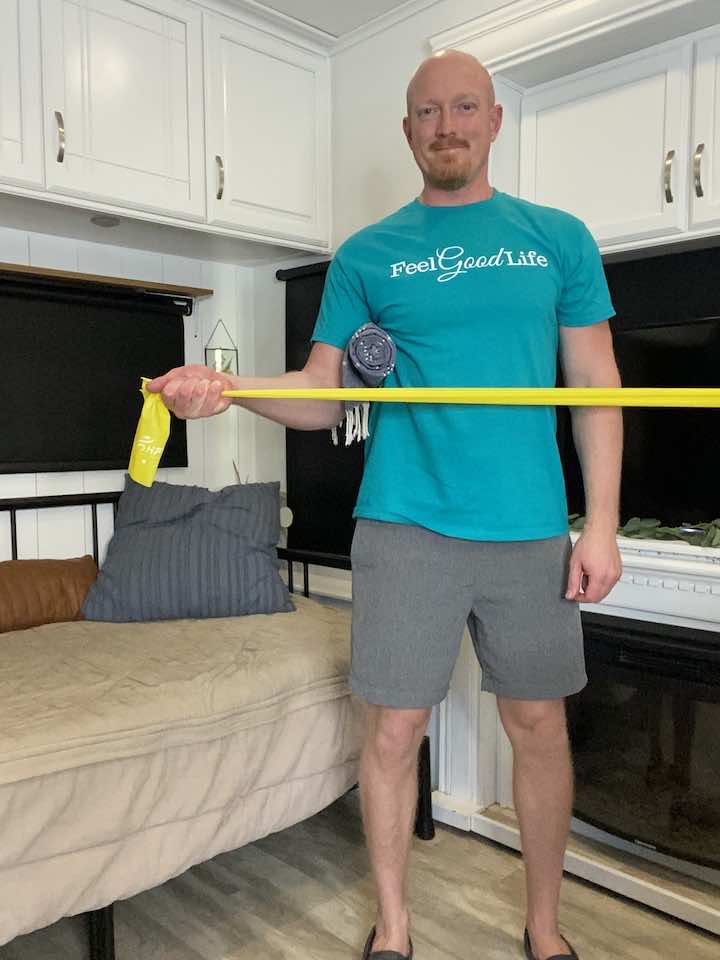
- Attach one end of the resistance band to a secure location, such as a doorknob or post, at the height of your elbow to perform the correct motion.
- Stand facing the band and hold the other end with your hand on the same side, elbow bent at a 90-degree angle and tucked by your side, and palm facing towards your body.
- Keeping an upright posture, slowly pull the band away from your body, rotating your arm outward and away from your torso while maintaining the 90-degree angle of your elbow.
- Hold this position for 2 seconds, then return to your starting position.
- Repeat the movement for 10 repetitions, then switch to the other arm.
- Aim for 3 sets of this exercise.
5. Internal Shoulder Rotation with a Resistance Band
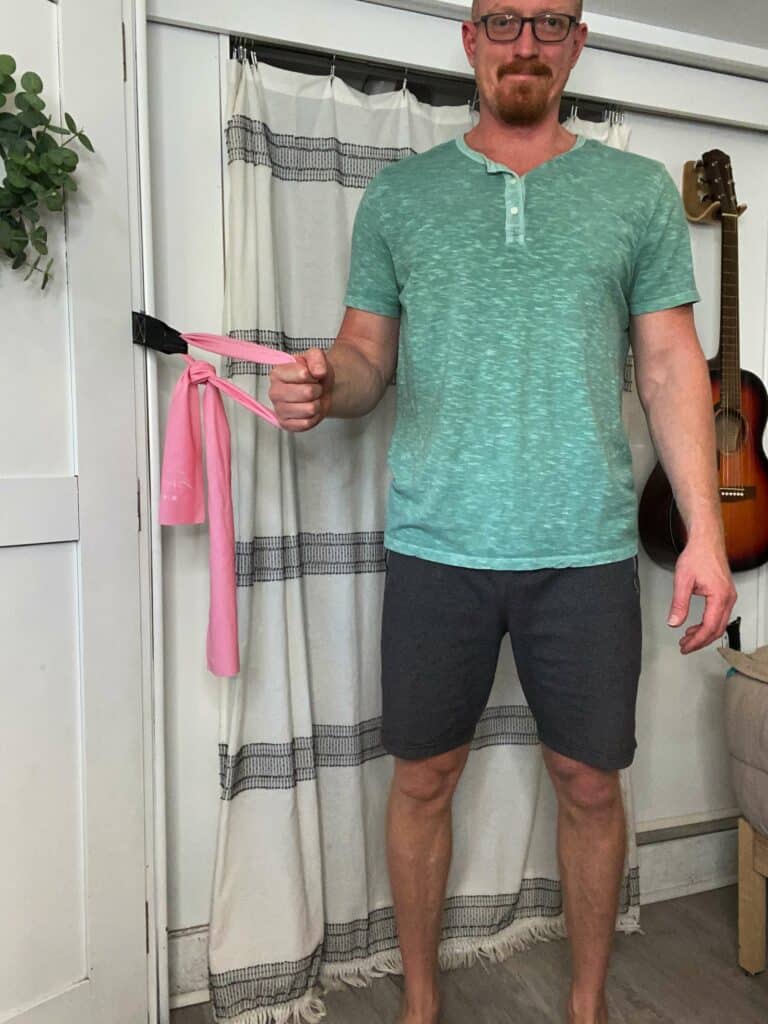
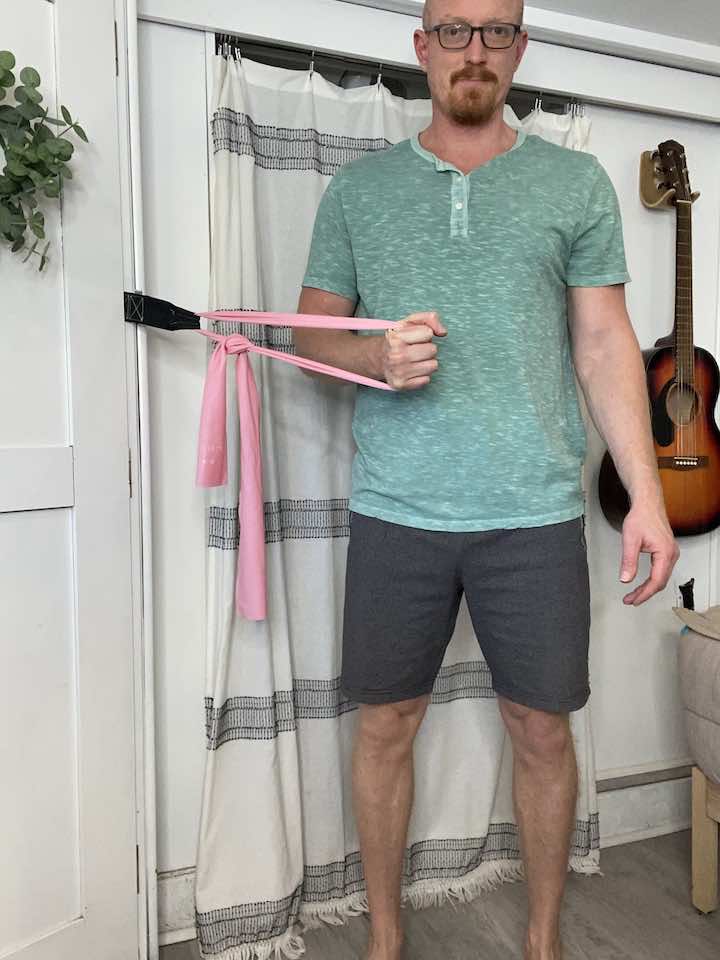
- To perform this exercise, you will need to attach one end of the band to a secure location, such as a doorknob or post, at the height of your elbow to perform the correct motion.
- Keeping an upright posture, slowly pull the band towards your stomach while maintaining the 90-degree angle of your elbow.
- Hold for 2 seconds, then return to your starting position.
- Repeat the movement for 10 repetitions, then switch to the other arm.
- Aim for 3 sets of this exercise.
Specialized Exercises for Intense Pain
For more intense pain, isometric neck strengthening exercises can be beneficial:
- Frontal Isometric Strengthening: Gently press your hands into your forehead and vice versa, hold for 5 seconds, repeat 10 times.
- Posterior Isometric Strengthening: Press your hands into the back of your head and vice versa, hold for 5 seconds, do 10 sets.
- Lateral Isometric Strengthening (Right and Left): Gently press your hand into the side of your head and vice versa, hold for 5 seconds, repeat 10 times each side.
Care Tips for Neck Health in Rheumatoid Arthritis
Caring for your neck involves more than just exercises. Here are some additional tips:
- Regular Movement: Avoid prolonged immobility to prevent stiffness.
- Heat Therapy: Applying warmth can relax muscles and alleviate pain.
- Proper Posture: Maintain a neck-friendly posture, especially when sitting for long periods.
- Stress Management: Techniques like meditation can reduce muscle tension caused by stress.
- Consultation with Healthcare Professionals: Regular check-ups and following prescribed treatments.
Conclusion
Managing neck pain caused by Rheumatoid Arthritis requires a comprehensive approach that includes targeted exercises, proper care, and consistent practice. By incorporating soft tissue mobilization, range of motion activities, stretching, and strengthening exercises into your routine, you can significantly alleviate pain and enhance neck mobility.
Remember to combine these exercises with proper posture, regular movement, and stress management techniques to achieve the best results. Start these practices today to pave the way for a more comfortable and active life despite the challenges of Rheumatoid Arthritis.


